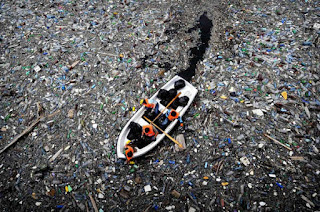5.4 Consumer Confidence Reports and Water Quality
Through reading my city's two- page Consumer Confidence Report 2016 I learned that lead is one of the top concerns were lead, security, and sensitive populations. The concern with lead is due to service lines and home plumbing. The city states that is strives to provide high quality drinking water but that it unfortunately has no control over the materials used in plumbing components which can erode over time. Those living in older homes may be more concerned, I am assuming. The tests that assessed lead in water were done in 2014. This year, 2017 is when the next round of testing is expected to occur.
The source of my drinking water is Lake Berryessa and San-San Joaquin Delta. The water is transported through he Putah South Canal and the North Bay Aqueduct. There are two treatment plants- Waterman and North Bay Regional. The chemicals found in my water that were higher than expected was Aluminum. Aluminum was found at 0.049 parts per million (ppm). The standard range is between 0.02 to 0.073 ppm. The public health goal (PHG) is 0.6 ppm. It looks like in 2016 we were on the higher end of the range. It was good to read that Arsenic was at a very low level in our drinking water.
The chemicals I did not expect to find in my water were Arsenic, and Bromate. Bromate, a disinfectant byproduct/residual was at 0.2 ppm. The standard range for Bromate is 0.1-0.2 ppm so that is concerning as well as it exceeds the PHG of 0.1 ppm. I was happy to see no fecal matter was in my drinking water it was 0.0 ppm across the board. :) While there was no Lead in my drinking water, upon reading more closely, I was disappointed to find out my city's water department only collected and tested 50 samples of drinking water for Lead and Copper. Given what the same Consumer Confidence Report said about the city's water system being in service for over 100 years and how materials from plumbing components erode, I would think more samples would be collected and tested.
The associated health risks with the Arsenic are that it causes nausea, vomiting, diarrhea, dehydration and shock. At higher levels, Arsenic increase risks of diabetes, high blood pressure and certain cancers (CDC, 2017). Bromate is a derivative of Bromine. Bromine I found out is often used as a fire retardant and as an alternative to chlorine in swimming pools. Low exposure to Bromine causes nausea and other gastrointestinal problems. Long term exposure causes lung problems, kidney and brain damage from low blood pressure (CDC, 2017). I would like to get a Brita filter, right now at home we drink mostly bottled water. Brita states that they filter out many different compounds like Lead, Copper, Zinc and reduces Chlorine and Mercury among other things (see chart below).
My own Consumer Confidence Report stated that drinking water including bottled water may be reasonably expected to contain at least small amounts of contaminants! So there is really no benefit I can discern from drinking bottled water instead of tap water. After watching the video on the Story of Bottled Water and learning from a previous assignment that 25% of bottled water comes from tap, and learning how much more harm I am doing to the environment because of the plastic bottles I consume, I plan to invest in refillable non plastic water bottles for my family and I.






Hi Mayra,
ReplyDeleteI'm glad to know that there was no fecal matter in your drinking water. I'm curious to know why your drinking water have a high aluminum content. I'm surprised to learn that the report stated that bottled water might contain some contaminants. I think I rather drink tap water than bottled water. I think it is a good idea to invest in refillable non-plastic water bottles for you and your family.
- Krissy